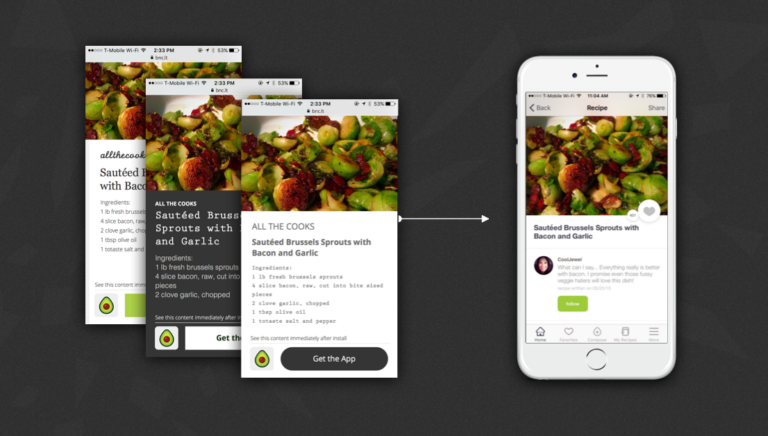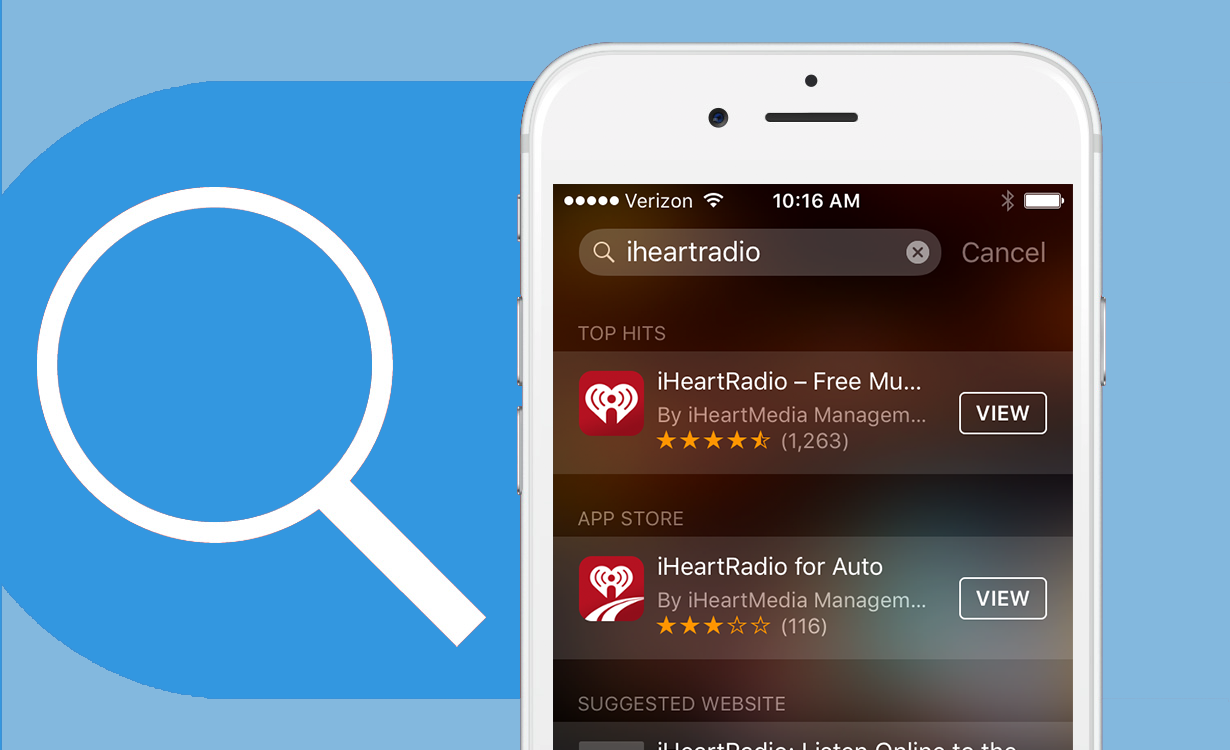Consumers are changing the way that they search online – shifting queries from desktop to mobile devices in rapid fashion. Interestingly, mobile search has now overtaken desktop in 10 countries (including the U.S. and Japan). This is happening so fast that almost the entire mobile ecosystem is now scrambling to catch up, especially the two leading mobile platforms.
With consumers spending over 85% of their time on mobile devices inside of apps, Google and Apple want to make mobile apps more search friendly by releasing new app indexing methods for mobile developers. The goal: show consumers search results for in-app content. This becomes increasingly important as emerging mobile-first and mobile-only companies don’t offer web content and need ways to increase organic discovery.
Today, however, app content rarely shows up in search results, even among launch partners for new app indexing technologies. In fact, most successful apps prefer to drive traffic to their app from existing websites, which in turn have attracted visitors through SEO. Of course, using old web content discovery methods isn’t a viable strategy for mobile-first and mobile-only app developers. As content shifts to mobile apps, this problem will only grow.
To successfully grow an app, mobile developers and marketers need to embrace the rapidly approaching new world of mobile app search that focuses on surfacing in-app content. We’ve put together a quick primer how you can make sure your app is ready for the future of mobile search.
Beware the False Promises of App Store Optimization
Since mobile content has historically rarely been indexed by search engines, mobile SEO consultants have turned their energies to App Store Optimization (“ASO”). In reality, however, there are only a few levers to pull (and all of your competitors are pulling the exact same ones). In Kissmetrics’ helpful blog post on ASO, they narrow the topic to 3 tactics:
- Tweak your app’s store page to prioritize specific keywords.
- Leverage download volume to influence search ranking.
- Curate reviews.
Absent a viral hit, you’d need to spend heavily to “chart” your app to influence rankings. What’s left is tweaking a title’s keywords while dealing with rapidly changing store search algorithms. That’s a pretty limited toolkit for app discovery on stores. Worst of all, changes made for ASO don’t benefit users.
Prepare for the Rise of App SEO
App SEO isn’t a common term, but it’s where the industry is headed. While search engines have been quietly indexing app content for a couple of years, they’re only just beginning to rank that content for search results.
Search engines reward good content, so investing in your app’s content will pay high dividends in the long term for app search. With app search in its infancy, there isn’t a lot of information on what works best for app SEO. For the moment, we recommend two simple things: 1) Stay up-to-date on the latest technologies, and 2) Invest in your app content.
1) The Latest Technologies: App Indexing and Spotlight Search
Google and Apple are the key players in these early days of mobile search. Google is already behind in app search, and Apple is taking advantage of this paradigm shift to attack Google’s core business model. App discovery will be the next frontier, and that’s great news for developers.
| Company | Search engine | Indexing technology |
| Google Search | App Indexing | |
| Apple | Spotlight Search | Core Spotlight Framework |
Google App Indexing
App Indexing is Google’s way of understanding your app content. We go into detail here, but it basically involves marking up your website with meta-tags that correspond to your app content, so that when Google scrapes that content on web, it knows where it lives in your app as well. In addition to marketing up your mobile website, Google released an update to App Indexing that will also allow app only content on Android to be listed.
Even with the new announcement, the nascent Google app discovery engine is going to be influenced heavily by web which is a double edged sword: great if you have a strong web presence with good SEO but if you only have an app (especially an iOS app), Google will likely punish you, since it just doesn’t know your app content that well. If you have an app but no website, we recommend using Deepviews, which will automatically host your content on web so it can also be visible to Google web crawlers and drive downloads.
Apple Spotlight Search
Spotlight Search is Apple’s search portal. Apple indexes content that you identify for them using their Core Spotlight Framework. Apple then surfaces your content to users in Spotlight Search (the search bar that appears on the top of your iPhone when you swipe down from your home screen or all the way left). Spotlight Search comes in two flavors:
- Spotlight Local: Scans content on a user’s phone and return relevant content in apps that are already installed.
- Spotlight Cloud: Theoretically scans any app content listed by developers, regardless of whether the app is installed on the phone.
We’ve put together some best practices for Spotlight here.
In our opinion, Spotlight Local is the most immediately useful. It’s the only mobile search we’ve seen working in practice. Google Search just announced app search results this week, and Spotlight Cloud isn’t currently returning many (if any) app content search results. We expect this to change soon. Leave us a comment with a screenshot if you’ve seen app search results from Spotlight Cloud or Google Search.
2) Invest in Your App’s Content
It’s a good idea to be ready for these when they appear, as mobile content search will fundamentally shift the way apps acquire users. Instead of web content SEO driving traffic to apps, users will instead discover app content via both web search and device search as developers will be rewarded high quality content within their app.
High quality is a relatively nebulous phrase, but clarity around how the various search algorithms rank app content will emerge as they mature. While understanding how app content will impact app seo will be an evolving learning process, it is now possible to understand how discrete in-app content influences users to install and engage with your app. At Branch, we released a product called Content Analytics that can help developers quickly build those types of insights.
App SEO: a Win for Developers and Users
Consumers love spending time in mobile apps. And it’s that love for apps and the concurrent shift away from using the web for conducting searches that is forcing Google and Apple to rethink how in-app content can be leveraged in the app discovery process.
This is great for consumers because it opens up a source of relevant, great content and likely reduces friction in the app discovery process. And it’s great for app developers, because it allows great content to level the app discovery playing field by reducing reliance on questionable tactics like “charting” and review curation.
Staying up-to-date with the latest indexing and deep linking technologies can be challenging. At Branch, we believe that life should be easier for developers. We share the latest information and how to’s on this blog. In addition, we’ll share tips on how integrating Branch and other technologies can help you stay ahead of the app SEO trend.
For example, we recently released the Branch Universal Object, a new mechanism for creating deep links and indexing content. With the Branch Universal Object, you can identify all the relevant metadata for that content, and Branch will take care of getting it listed and indexed for you by both Google and Apple.
We also provide features that help you grow your app by leveraging your content, so you can focus on making an amazing mobile app, not constantly trying to keep up with new technologies.
























